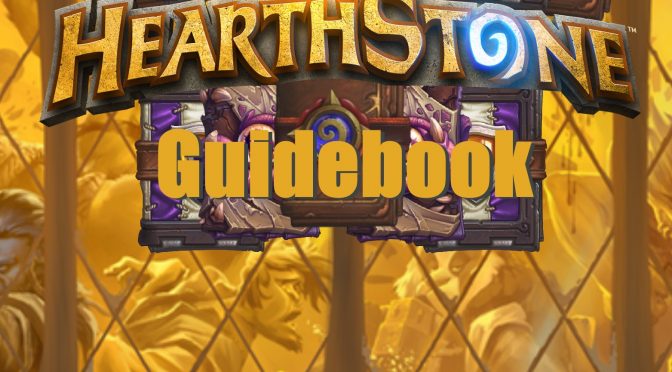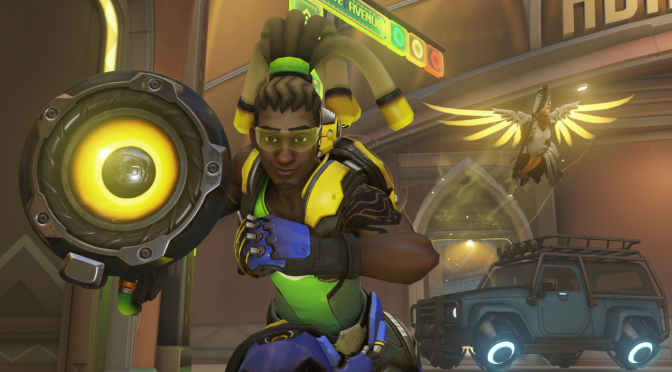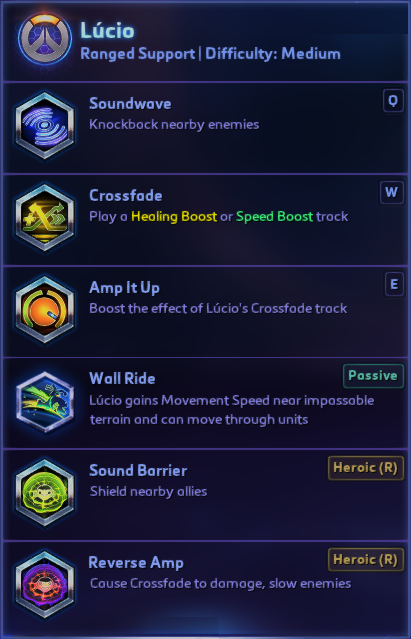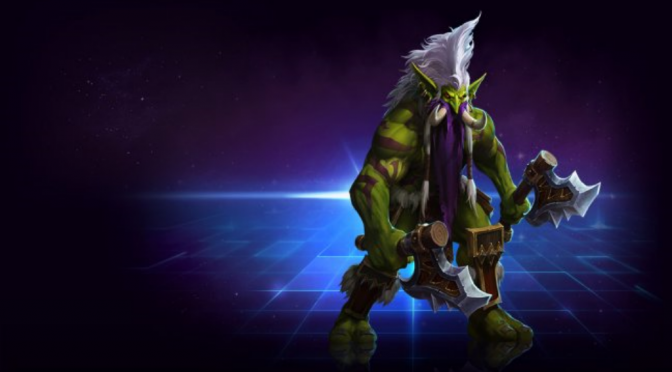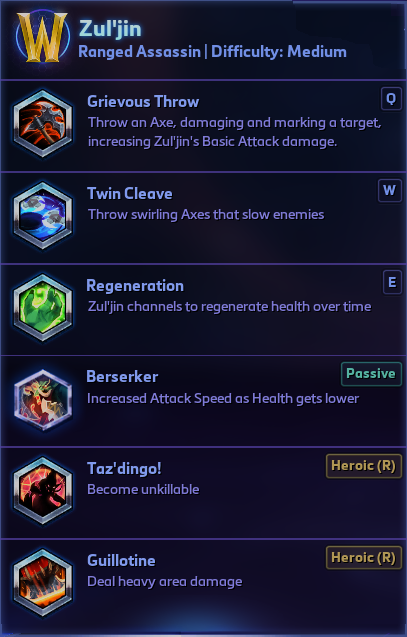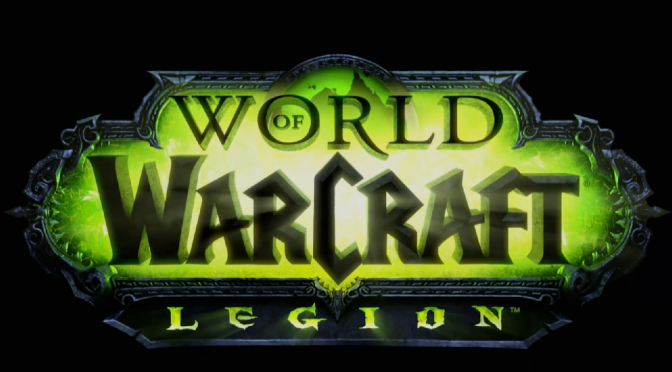Hearthstone’s newest expansion, Journey to Un’Goro, is just around the corner. There are many new features coming with the expansion (such as the new Elemental tribe and the Adapt mechanic), but the most exciting of all are the new Legendary Quests.
Quests are 1-mana Legendary Spells that are always in your hand at the beginning of the game (though you can choose to mulligan the Quest away if you want). Once you play the Quest, you then have to complete a certain task, such as summoning 7 Deathrattle Minions or discarding 6 cards. These tasks will often take several turns to complete, but if you succeed, you will receive a game-changing reward.
Every class is receiving one of these new Quests, each with a unique task and reward. They are all very powerful, but their impact on the game varies from Quest to Quest. In this article, we’re going to go over all nine of the new Quests, so you can know exactly what to expect.
Druid: Jungle Giants 
The Druid Quest, Jungle Giants, requires players to summon 5 minions with 5 or more Attack. Aside from Token Druid—which hasn’t been a viable deck in a long time—every Druid deck’s main focus has been summoning the largest minions possible, so this Quest will often be completed just through normal gameplay. In addition, many Druids don’t play anything on turn one, which makes this card an auto-include in nearly every Druid deck.
 Once the Quest is completed, Druids receive Barnabus the Stomper, a 5-mana 8/8 with Battlecry: Reduce the Cost of minions in your deck to (0). Needless to say, this is an incredibly powerful effect for Druids, as their minions are often on the high end of the mana curve.
Once the Quest is completed, Druids receive Barnabus the Stomper, a 5-mana 8/8 with Battlecry: Reduce the Cost of minions in your deck to (0). Needless to say, this is an incredibly powerful effect for Druids, as their minions are often on the high end of the mana curve.
Overall, Jungle Giants is a very powerful Quest, as it rewards Druid players for playing naturally. As a result, it will likely be an auto-include in nearly every deck.
Hunter: The Marsh Queen
The Marsh Queen is one of the easier Quests to complete, as it only requires you to play seven 1-mana minions. Hunter already plays a lot of powerful 1-mana minions, including the Fiery Bat and Alleycat, and they’re getting even more in Journey to Un’Goro, which makes completing this quest a cinch.
The reward is Queen Carnassa, a 5-mana 8/8 who shuffles 15 Raptors into your deck. Raptors are a 1-mana 3/2 that draw a card when they’re played, which means that once you get this quest out, you’ll be able to fill the board with minions every turn.
 The Marsh Queen is a solid Quest that fits into both Aggro and Midrange Hunter. These decks both struggle with running out of resources, so the Raptors you get from the reward are perfect for winning a tight game.
The Marsh Queen is a solid Quest that fits into both Aggro and Midrange Hunter. These decks both struggle with running out of resources, so the Raptors you get from the reward are perfect for winning a tight game.
The main downside to The Marsh Queen is that its victory condition (swarming the board with Raptors) is weak against control decks with lots of board clears. During the Gadgetzan meta, the only prominent deck that ran board clears was Renolock. With the arrival of Journey to Un’Goro, however, the meta will likely shake up a good deal, and board clears could be a lot more common.
Overall, The Marsh Queen looks like a powerful card, and it will likely be the staple of Hunter decks for a while to come.
Mage: Open the Waygate
Unlike Jungle Giants and The Marsh Queen, which are both pretty straightforward, Open the Waygate requires players to think a little outside the box. In order to complete Open the Waygate, Mages have to cast 6 spells that didn’t start in their deck.
Now, at first glance, this seems incredibly difficult—however, it really isn’t that bad. With cards like Babbling Book and Cabalist’s Tome and the new secret, Mana Bind, Mages have many ways to get spells from outside their deck. Once  the Mage completes the Quest, things get even crazier, as the reward is the powerful Time Warp.
the Mage completes the Quest, things get even crazier, as the reward is the powerful Time Warp.
A 5-mana spell, Time Warp allows you to take an extra turn. This is an incredibly powerful effect, as it allows you to unleash 15-mana worth of spells before your opponent has a chance to react. As a result, Open the Waygate is one of the most powerful Quests in the game, and will likely show up in many Mage decks.
Paladin: The Last Kaleidosaur
The Paladin Quest, The Last Kaleidosaur asks players to cast 6 spells on their own minions. Now, minion buffing has been a core theme of Paladin ever since the beginning—but the archetype never really worked in constructed due to the prevalence of silences and polymorph effects. As a result, the Quest seemed like an impossible task—until the rest of the Paladin cards were revealed.
New, powerful buffs like Spikeridged Steed (a 6-mana spell that gives a minion +2/+6 and Taunt and Deathrattle: summon a 2/6 with Taunt) and Adaptation (a 1-mana spell that lets you Adapt a friendly minion) were added to the Paladin arsenal. Even more importantly, Paladins got the Primalfin Champion, a 2-mana 1/2 with Deathrattle: Return any spells you cast on this minion to your hand. This card allows Paladins to get double value from their buff spells, which in turn will make The Last Kaleidosaur much easier to complete.
 As for the reward, Paladins get Galvadon, a 5-mana 5/5 with Battlecry: Adapt 5 times. This is an incredibly powerful effect, as possible Adaptations include Stealth, Windfury and +3 Attack. Put all these together, and you get a 14/5 minion with Stealth and Windfury, which is capable of putting out 28 damage in one turn.
As for the reward, Paladins get Galvadon, a 5-mana 5/5 with Battlecry: Adapt 5 times. This is an incredibly powerful effect, as possible Adaptations include Stealth, Windfury and +3 Attack. Put all these together, and you get a 14/5 minion with Stealth and Windfury, which is capable of putting out 28 damage in one turn.
Needless to say, Galvadon is incredibly powerful—however, he is susceptible to untargeted board clears such as Twisting Nether and Dragonfire Potion. In many cases, however, these board clears won’t be available when Galvadon is played, which means that The Last Kaleidosaur is a pretty good Quest.
Priest: Awaken the Makers
The Priest Quest—Awaken the Makers—is pretty basic. Summon 7 Deathrattle minions, and you’ll get your reward. Ever since the Dark Cultist back in Naxxramas, Priest has always had a lot of powerful Deathrattle minions, and they’re getting even more in Journey to Un’Goro. As a result, this is a pretty easy Quest to complete, and should be finished in nearly every game.
 The problem with Awaken the Makers, however, is the reward: Amara, Warden of Hope. A 5-mana 8/8 with Taunt, Amara’s Battlecry sets your hero’s Health to 40. Now, at face value, this is very good—however, in many games, ten extra Health won’t actually make a big difference. Priest is losing several of their most powerful control cards, and they aren’t getting anything to fill the void. As a result, if a Priest falls behind on board, they will struggled to regain control, and they’ll die from 40 as easily as they’d die from 30.
The problem with Awaken the Makers, however, is the reward: Amara, Warden of Hope. A 5-mana 8/8 with Taunt, Amara’s Battlecry sets your hero’s Health to 40. Now, at face value, this is very good—however, in many games, ten extra Health won’t actually make a big difference. Priest is losing several of their most powerful control cards, and they aren’t getting anything to fill the void. As a result, if a Priest falls behind on board, they will struggled to regain control, and they’ll die from 40 as easily as they’d die from 30.
Overall, the Priest Quest is underwhelming in comparison to the others, but it is still a full heal, so it isn’t bad—it’s just not game-winning in most cases.
Rogue: The Caverns Below
Similar to the Mage Quest, The Caverns Below is a Quest that requires a bit of planning. In order to complete this Quest, you have to Play four minions with the same name. Unlike many of the other Quests, The Caverns Below specifies ‘Play’, so you’ll need to use bounce-back cards such as Gadgetzan Ferryman and Shadowstep in order to pull this off.
This isn’t an easy task, but the payoff is huge, as you get the powerful Crystal Core. A 5-mana spell, Crystal Core makes all your minions  5/5 for the rest of the game. This includes minions on your board, in your hand, in your deck and even tokens that are summoned by other minions!
5/5 for the rest of the game. This includes minions on your board, in your hand, in your deck and even tokens that are summoned by other minions!
Overall, The Caverns Below is a powerful card. It isn’t easy to complete, but once you do, you’ll be in a commanding position for the rest of the game.
Shaman: Unite the Murlocs
As Shamans are known for their connection to the elements, many players were expecting their quest to revolve around summoning the new Elementals. This couldn’t be further from the truth, however, as Shamans instead got Unite the Murlocs, which requires them to summon 10 Murlocs.
This is a fairly easy task to complete, as cards like Call in the Finishers (summon four 1/1 Murlocs) and Finja, the Flying Star (who summons two Murlocs from your deck whenever it attacks and kills a minion) will consistently get you the Murlocs you need.
 Now, while Murloc Shaman has always been a potentially powerful deck, there’s been one main factor that holds it back: the lack of resources. Fortunately, this problem is completely solved by the Quest reward, a Murloc named Megafin. A 5-mana 8/8, Megafin’s Battlecry fills your hand with random Murlocs. This is an incredibly powerful effect, as it gives Murloc Shaman the extra fuel they need to finish their opponents off.
Now, while Murloc Shaman has always been a potentially powerful deck, there’s been one main factor that holds it back: the lack of resources. Fortunately, this problem is completely solved by the Quest reward, a Murloc named Megafin. A 5-mana 8/8, Megafin’s Battlecry fills your hand with random Murlocs. This is an incredibly powerful effect, as it gives Murloc Shaman the extra fuel they need to finish their opponents off.
Overall, this is a very powerful Quest—however, there’s a good likelihood that the vast majority of Shaman decks in the upcoming months will be Elemental Shamans, rather than Murloc Shamans, which would make this Quest useless. For now, though, Unite the Murlocs seems like a solid card, and it will likely see some play.
Warlock: Lakkari Sacrifice
For the past several expansions, Warlocks have been pushed toward the Discardlock archetype. However, despite powerful cards such as the Silverware Golem (a 3/3 that summons itself when discarded) and Malchezaar’s Imp (which draws cards whenever cards are discarded) the archetype was sidelined in favor of the more powerful Renolock.
With the upcoming arrival of the Year of the Mammoth, Reno Jackson will rotate out of the Standard format, opening the door for a new type of Warlock deck. Thanks to Lakkari Sacrifice, Discardlock may just be the deck to fill this void.
Lakkari Sacrifice requires players to discard 6 cards. This might have been difficult in the past (as players would often end up discarding their discarders), but with the addition of new cards like Clutchmother Zavas (a 2-mana 2/2 that returns to your hand and gains +2/+2 whenever it’s discarded), Warlocks can discard their hand much more consistently.
 As for the reward, Warlock players get the Nether Portal, a 5-mana spell that opens a permanent portal on the board. This portal cannot be destroyed, and it summons a constant stream of 3/2 imps for the rest of the game. This is an incredibly powerful board control card, and easily makes up for the 6 cards that were discarded.
As for the reward, Warlock players get the Nether Portal, a 5-mana spell that opens a permanent portal on the board. This portal cannot be destroyed, and it summons a constant stream of 3/2 imps for the rest of the game. This is an incredibly powerful board control card, and easily makes up for the 6 cards that were discarded.
Warrior: Fire Plume’s Heart
The final Quest, Fire Plume’s Heart requires Warriors to play seven Taunt minions. In the past, this might have been a difficult task, but thanks to the new cards introduced in Journey to Un’Goro, Warriors now have a massive pool of powerful Taunt minions to choose from.
As for the reward, Warriors get Sulfuras. Once wielded by Ragnaros the Firelord, Sulfuras is a 3-mana 4/2 weapon that changes your hero power to ‘Deal 8 damage to a random enemy’. This is a massively powerful effect, as 8 damage a turn will quickly whittle  down even the toughest enemy—however, it comes at the cost of losing the ability to gain armor. Against Aggro decks, this is a big deal—however, it is mitigated by the sheer number of Taunts that have been flooding the board in order to fulfill the Quest in the first place.
down even the toughest enemy—however, it comes at the cost of losing the ability to gain armor. Against Aggro decks, this is a big deal—however, it is mitigated by the sheer number of Taunts that have been flooding the board in order to fulfill the Quest in the first place.
Overall, Fire Plume’s Heart is a very powerful quest, and it will likely see a lot of play—assuming that Warriors are capable of playing anything other than Pirate.
For the most part, the upcoming Quests seem very powerful. There are a few (Open the Waygate and The Last Kaleidosaur) that create potential one-turn-kill scenarios, as well as a few others (Unite the Murlocs, The Caverns Below and Lakkari Sacrifice) that will provide powerful tempo swings.
The remaining Quests don’t quite provide the immediate benefits of the aforementioned, but they are all very powerful in their own ways. Overall, the Quest system seems like a formidable addition to Hearthstone, and I can’t wait to see how players utilize it in the weeks to come.

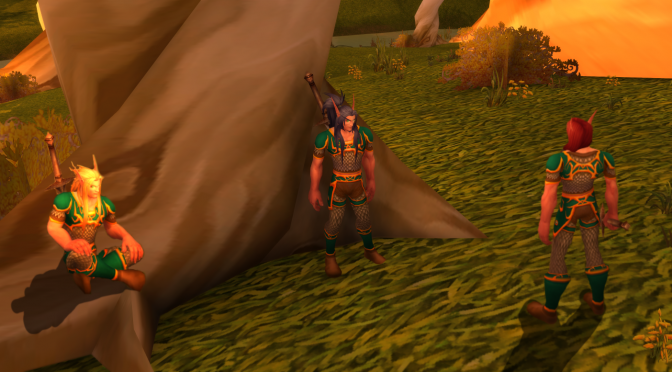
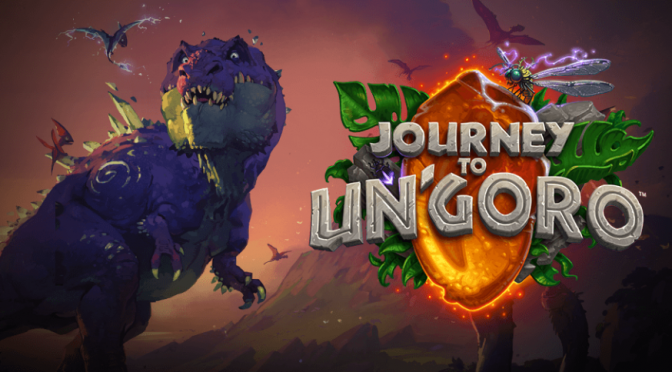





 Despite the obvious synergies, however, Lakkari Sacrifice has been absent from nearly all Warlock decks, and Clutchmother Zavas is rarely seen as well. There are many reasons for this neglect—however, the biggest is that the cards simply don’t work well enough. Lakkari Sacrifice isn’t a powerful enough Quest Reward, and Clutchmother Zavas—while powerful—isn’t as strong as many Legendaries.
Despite the obvious synergies, however, Lakkari Sacrifice has been absent from nearly all Warlock decks, and Clutchmother Zavas is rarely seen as well. There are many reasons for this neglect—however, the biggest is that the cards simply don’t work well enough. Lakkari Sacrifice isn’t a powerful enough Quest Reward, and Clutchmother Zavas—while powerful—isn’t as strong as many Legendaries.

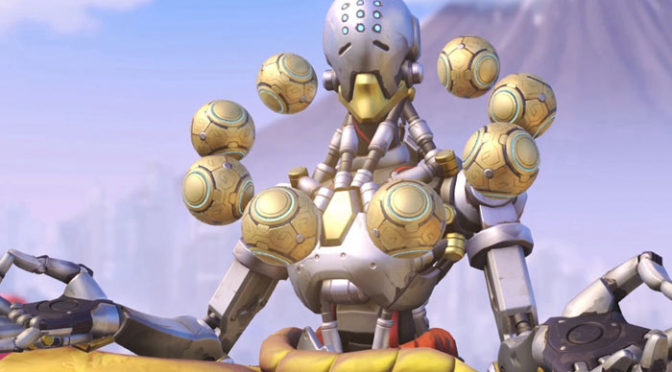
 centers around completing the Warlock class quest, Lakkari Sacrifice. Lakkari Sacrifice requires you to discard six cards, and if you do, you receive the powerful Nether Portal (which summons a pair of 3/2 Imps at the end of your turn). The Nether Portal cannot be destroyed—even with complete Board Clears like Twisting Nether—so once you get it out onto the board, you’ll gain a lot of tempo for the rest of the game.
centers around completing the Warlock class quest, Lakkari Sacrifice. Lakkari Sacrifice requires you to discard six cards, and if you do, you receive the powerful Nether Portal (which summons a pair of 3/2 Imps at the end of your turn). The Nether Portal cannot be destroyed—even with complete Board Clears like Twisting Nether—so once you get it out onto the board, you’ll gain a lot of tempo for the rest of the game. The second deck I played, Elemental Paladin isn’t the most obvious archetype for the class. Despite this, the deck was actually surprisingly successful, due to a few interesting interactions.
The second deck I played, Elemental Paladin isn’t the most obvious archetype for the class. Despite this, the deck was actually surprisingly successful, due to a few interesting interactions. Shield and minions such as the Kabal Talonpriest to empower Adapted minions. The deck’s main win condition is the Vicious Fledgling, a 3-mana 3/3 that Adapts every time it attacks a hero. If this card can stay alive for more than a turn or two, it quickly becomes unmanageable.
Shield and minions such as the Kabal Talonpriest to empower Adapted minions. The deck’s main win condition is the Vicious Fledgling, a 3-mana 3/3 that Adapts every time it attacks a hero. If this card can stay alive for more than a turn or two, it quickly becomes unmanageable. Control Elemental Shaman forgoes playing many of the smaller Elementals in favor of massive minions such as the Earth Elemental (a 5-mana 7/8 with Taunt that Overloads for 3). Once these minions are established, it then uses cards such as Ancestral Spirit and Faceless Shambler to maintain the wall.
Control Elemental Shaman forgoes playing many of the smaller Elementals in favor of massive minions such as the Earth Elemental (a 5-mana 7/8 with Taunt that Overloads for 3). Once these minions are established, it then uses cards such as Ancestral Spirit and Faceless Shambler to maintain the wall.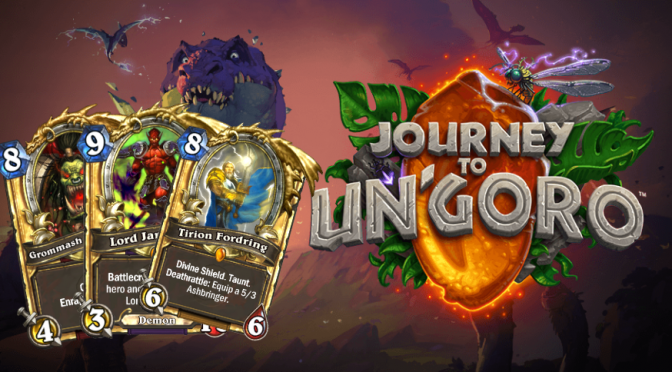

 Hunter: King Krush
Hunter: King Krush
 Paladin: Tirion Fordring
Paladin: Tirion Fordring
 Rogue: Edwin VanCleef
Rogue: Edwin VanCleef
 Warlock: Lord Jaraxxus
Warlock: Lord Jaraxxus

 Once the Quest is completed, Druids receive Barnabus the Stomper, a 5-mana 8/8 with Battlecry: Reduce the Cost of minions in your deck to (0). Needless to say, this is an incredibly powerful effect for Druids, as their minions are often on the high end of the mana curve.
Once the Quest is completed, Druids receive Barnabus the Stomper, a 5-mana 8/8 with Battlecry: Reduce the Cost of minions in your deck to (0). Needless to say, this is an incredibly powerful effect for Druids, as their minions are often on the high end of the mana curve.
 The Marsh Queen is a solid Quest that fits into both Aggro and Midrange Hunter. These decks both struggle with running out of resources, so the Raptors you get from the reward are perfect for winning a tight game.
The Marsh Queen is a solid Quest that fits into both Aggro and Midrange Hunter. These decks both struggle with running out of resources, so the Raptors you get from the reward are perfect for winning a tight game.
 the Mage completes the Quest, things get even crazier, as the reward is the powerful Time Warp.
the Mage completes the Quest, things get even crazier, as the reward is the powerful Time Warp.
 As for the reward, Paladins get Galvadon, a 5-mana 5/5 with Battlecry: Adapt 5 times. This is an incredibly powerful effect, as possible Adaptations include Stealth, Windfury and +3 Attack. Put all these together, and you get a 14/5 minion with Stealth and Windfury, which is capable of putting out 28 damage in one turn.
As for the reward, Paladins get Galvadon, a 5-mana 5/5 with Battlecry: Adapt 5 times. This is an incredibly powerful effect, as possible Adaptations include Stealth, Windfury and +3 Attack. Put all these together, and you get a 14/5 minion with Stealth and Windfury, which is capable of putting out 28 damage in one turn.
 The problem with Awaken the Makers, however, is the reward: Amara, Warden of Hope. A 5-mana 8/8 with Taunt, Amara’s Battlecry sets your hero’s Health to 40. Now, at face value, this is very good—however, in many games, ten extra Health won’t actually make a big difference. Priest is losing several of their most powerful control cards, and they aren’t getting anything to fill the void. As a result, if a Priest falls behind on board, they will struggled to regain control, and they’ll die from 40 as easily as they’d die from 30.
The problem with Awaken the Makers, however, is the reward: Amara, Warden of Hope. A 5-mana 8/8 with Taunt, Amara’s Battlecry sets your hero’s Health to 40. Now, at face value, this is very good—however, in many games, ten extra Health won’t actually make a big difference. Priest is losing several of their most powerful control cards, and they aren’t getting anything to fill the void. As a result, if a Priest falls behind on board, they will struggled to regain control, and they’ll die from 40 as easily as they’d die from 30.
 5/5 for the rest of the game. This includes minions on your board, in your hand, in your deck and even tokens that are summoned by other minions!
5/5 for the rest of the game. This includes minions on your board, in your hand, in your deck and even tokens that are summoned by other minions!
 Now, while Murloc Shaman has always been a potentially powerful deck, there’s been one main factor that holds it back: the lack of resources. Fortunately, this problem is completely solved by the Quest reward, a Murloc named Megafin. A 5-mana 8/8, Megafin’s Battlecry fills your hand with random Murlocs. This is an incredibly powerful effect, as it gives Murloc Shaman the extra fuel they need to finish their opponents off.
Now, while Murloc Shaman has always been a potentially powerful deck, there’s been one main factor that holds it back: the lack of resources. Fortunately, this problem is completely solved by the Quest reward, a Murloc named Megafin. A 5-mana 8/8, Megafin’s Battlecry fills your hand with random Murlocs. This is an incredibly powerful effect, as it gives Murloc Shaman the extra fuel they need to finish their opponents off.
 As for the reward, Warlock players get the Nether Portal, a 5-mana spell that opens a permanent portal on the board. This portal cannot be destroyed, and it summons a constant stream of 3/2 imps for the rest of the game. This is an incredibly powerful board control card, and easily makes up for the 6 cards that were discarded.
As for the reward, Warlock players get the Nether Portal, a 5-mana spell that opens a permanent portal on the board. This portal cannot be destroyed, and it summons a constant stream of 3/2 imps for the rest of the game. This is an incredibly powerful board control card, and easily makes up for the 6 cards that were discarded.
 down even the toughest enemy—however, it comes at the cost of losing the ability to gain armor. Against Aggro decks, this is a big deal—however, it is mitigated by the sheer number of Taunts that have been flooding the board in order to fulfill the Quest in the first place.
down even the toughest enemy—however, it comes at the cost of losing the ability to gain armor. Against Aggro decks, this is a big deal—however, it is mitigated by the sheer number of Taunts that have been flooding the board in order to fulfill the Quest in the first place.